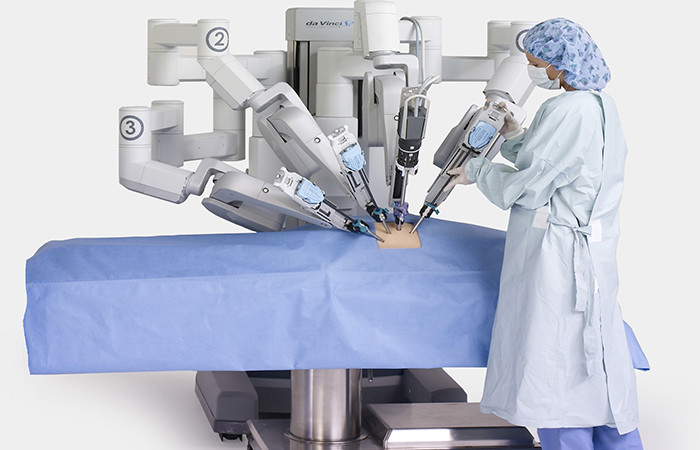Robotic surgery was first used in neurosurgery to make biopsy procedures to be performed more precisely, and this principle has begun to spread rapidly after the use. With the use of robotic surgery in orthopedic surgery, this technique has been accepted and adopted all around the world. After the emergence of this technique, videoscopic surgery has also developed, and the visualization of wounds and diseases in the internal organs of the patients became possible with a closed operation.
In videooscopic surgery, the instrument that enables to take images by opening a hole on the patient’s body is introduced into the body. Robotic surgery has possibility to introduce 2 cameras into the body, thus making it possible to capture view from different angles. Moreover, the fact that high imaging technologies are adapted to these robotic cameras makes the surgery easy as it is performed with the naked eye. In addition, the ability of the robotic cameras to access the parts that are not accessible to the hand offers great advantages, especially during the diagnosis. The fact that these robot cameras used during the surgery have 4 arms appears as one of the most important advantages of the system. One of these arms undertakes to handle the camera, while two of other arms handle the surgical equipment while the last arm fix the organ to be intervened. In addition, with the articulation tips attached to the surgical intervention arms, all operations that a hand is able to perform can be carried out without tremor problem. These articulation tips can perform three wrist movements, three arm movements, cutting and fixing operations at the same time. The problem of hand tremor is an undesired problem in any surgeon. A hand tremor that may occur especially in open surgeries may cause a high amount of blood loss and even death of the patient. But in robotic surgery, the robot is controlled by the surgeon from the console and the robot prevents the tremor problem with millimetric operations it carries out. In the first years when this technique was developed, although little, hand tremor caused problems in the use of robots; however, this problem was eliminated with the placement of a command system that detects small tremors in the robots system. Small hand tremors occurring during the surgeon’s control from the console are detected by this system, but not sent to the arms as a command. In this way, the margin of error was minimized during the operation and successful surgeries were performed.
The most important challenge of robotic surgery is that the surgeon has to manage the arms while looking at the monitor screen. At this point, a problem of hand and eye coordination arises. Because the image on the monitor is opposite of the image that can be seen with the naked eye. However, surgeons who have practice in robotic surgery can easily overcome such problems. The most common usage areas of this surgical technique include neurosurgery, surgical interventions of the gallbladder, thick and small intestine especially laparoscopic interventions, adrenal gland surgery and surgeries of the gynecologic organs. The major advantage offered by this system is to perform the surgery in a closed way. In this way, the patient’s recovery process accelerates and the patient can return to daily life much faster.
